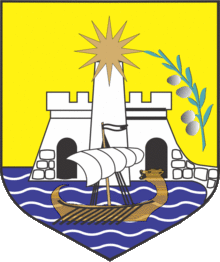Gjon Buzuku

Gjon Buzuku (16th century) was an Albanian Catholic priest who wrote the first known printed book in Albanian. Gjon Buzuku was born in the village of Ljare (Krajina, Albanian: Krajë) in the Bar district, close to Northern Albania (Krajë is located on the shores of Skadar Lake), then Ottoman Empire. He probably lived in or near Venice, Italy. There are claims that he was the bishop of two dioceses in north Albania or that he was a monk.
From March 20, 1554 to January 5, 1555 he wrote a translation of the Catholic missal into the Gheg dialect of Albanian. He published it as a book of 188 pages. The Apostolic Library in the Vatican holds the only known copy of the book. It is missing the frontispiece and the first 16 pages, which explains why the title and year of publication of the work are not known.
The book was discovered in 1740 by Gjon Nikollë Kazazi, the Albanian archbishop of Skopje. In other libraries there are three photocopies from the original, one of them in Tirana. In 1996, the librarians were not able to locate the book, which had been used in 1984 for the last time. Eqrem Çabej wrote a monograph on the book in 1968. The dialect used in Mëshari was one of the main subjects of Selman Riza's works.[1]
The place the book was printed is thought to be either Venice or Shkodër.
The book contains the liturgies of the main holidays. There are also texts of prayers and rituals and catechetical texts. Every page contains two columns. The initials are decorated. The grammar and the vocabulary are more archaic than in the Gheg text from the 17th century. The text is very valuable from the viewpoint of the history of language. The vocabulary is quite rich. The archaic text is easily read due to the circumstance that it is mainly a translation of known texts, in particular the Bible. Most of the Gospels of Matthew, Luke and John were translated in the book. It also contains passages from the Psalms, the Book of Isaiah, the Book of Jeremiah, the Letters to the Corinthians, and many illustrations.
The orthography is peculiar. The Latin alphabet with some additional letters is used. The consequent character of orthography and grammar seems to indicate an earlier tradition of writing.
In Albanian, the book is known as Meshari (The Missal). All we know about the author is from the book's colophon written by Buzuku himself in Albanian. Language used is a pre-runner to the Official Gheg Albanian Language. However, it is clear that the Gheg dialect was used. Even today one can hear words and expressions from older Malësians that sound as if jumping from the pages of the missal.
Sources
- ↑ Igla, Birgit; Boretzky, Norbert; Stolz, Thomas (2001-10-24). Was ich noch sagen wollte. Akademie Verlag. p. 43. ISBN 978-3-05-003652-6. Retrieved 8 July 2011.
External links
- The colophon in English
- The colophon in Albanian
- The whole text in Old Albanian
- A page from the book
